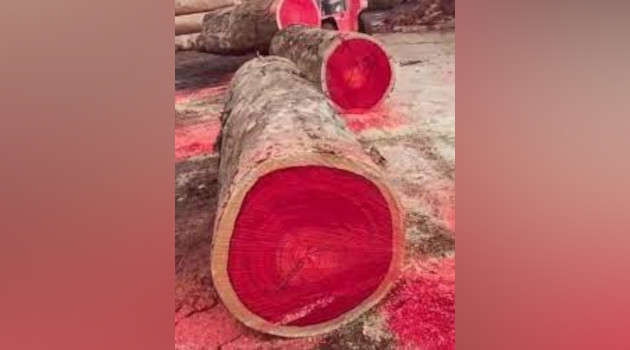Approximate reading time: 2 minutes 31 seconds
The name Brazil originates from how the Portuguese named this tree, pau brasil, meaning “stick of Brazil,” a reference to the bright red, carbuncle-like pigment that can be extracted from its wood. The appellation, then, is an abbreviated form of the word Tierra de Brasil, or “Land of the Wood of Brazil.” The plant’s name in the Tupi language is ibira pitanga (“red wood”).
When the Lusitanian navigators discovered the present country in South America, on April 22, 1500, they immediately saw the so-called “Brazil wood”, which was very abundant. Within a few years, logging and the export of timber had become a thriving industry, giving the Portuguese Crown its monopoly, thanks to the excellent qualities of the red dye, in the manufacture of fine textiles, such as velvet, which were in great demand during the Renaissance.
Exclusive uses of Pernambuco
Also called Pernambuco it is a slow growing tree of medium size (10-15m in height), with a straight trunk – suitable for cutting – covered with dark ash-coloured stingers. The wood has a bright reddish-orange colour, and is denser than water, so it cannot float, a property that impedes its river transport.

On the one hand, the leaves are compound, bipinnate, medium green and glossy. Meanwhile, the flowers are arranged in upright panicles near the tops of the branches. It consists of four yellow petals and one smaller red one, and is very aromatic. The androsium has ten stamens while the genicium is a superior ovary. The fruit is a legume covered with long, sharp spines and contains one to five brown, disc-shaped seeds.
Botanically, pau brasil is involved in several species of trees, all of which are in the Fabaceae (legume) family. The term “Brazilwood” is often used to refer to the species Paubrasilia echinata, but it is also applied to other species, such as Caesalpinia sappan, Haematoxylum brasiletto, ipê (Tabebuia avellanedae), and massaranduba (Manilkara bidentata).
As a curiosity to add that in the middle of woodworking high quality raw materials are obtained from this tree, which is commercially called pernambuco wood. These respective fibers are considered the best for making bows for stringed instruments, so much so that makers use them exclusively for such accessories of the violin family.
Such is the value of this raw material that archers and musicians all over the world have not found anything that can replace it: hardness, elasticity, density, beauty, and the ability to sustain a bend.
However, European over-ambitiousness and a growing demand for elegant fabrics dyed thanks to pau-brasil ravaged huge stretches of Mata Atlántica (the rainforest) within a few decades, bringing Pernambuco to the brink of extinction. In less than a century there weren’t enough trees to meet the demands of industry and market.
The species is currently listed as endangered by the International Union for Conservation of Nature, IUCN for its English acronym, as a species at high risk of surrender in Brazil. The market for this wood has not yet been banned. The International Pernambuco Conservation Initiative (IPCI), whose members are wholesalers of this wood, reforests and uses other raw materials for the manufacture of violins. An acute shortage of suitable natural properties helped the carbon fiber industry to replace it.
According to published data, the last population census in Pau Brazil took place in 2012, and since then there have been no updated figures, although Ojos Vista is still in critical condition. “In the past ten years we have seen the population decrease, mainly due to illegal exploitation (…) those who remain in very small and unprotected areas,” the researchers warn.
At the recently concluded Amazon Summit, leaders of the eight nations that host the Amazon region signed the Declaration of Belém, a final text that embodies the commitments agreed at the meeting. An “ambitious” protection plan was drawn up at the meeting for the largest tropical forest on the planet. The text draws attention to high-income countries to strengthen their commitment to climate action.
Hopefully, keeping Pau Brazil will be on the list, among other short, medium and long term perspectives.
Hits: 2

“Unapologetic tv specialist. Hardcore zombie trailblazer. Infuriatingly humble problem solver.”
